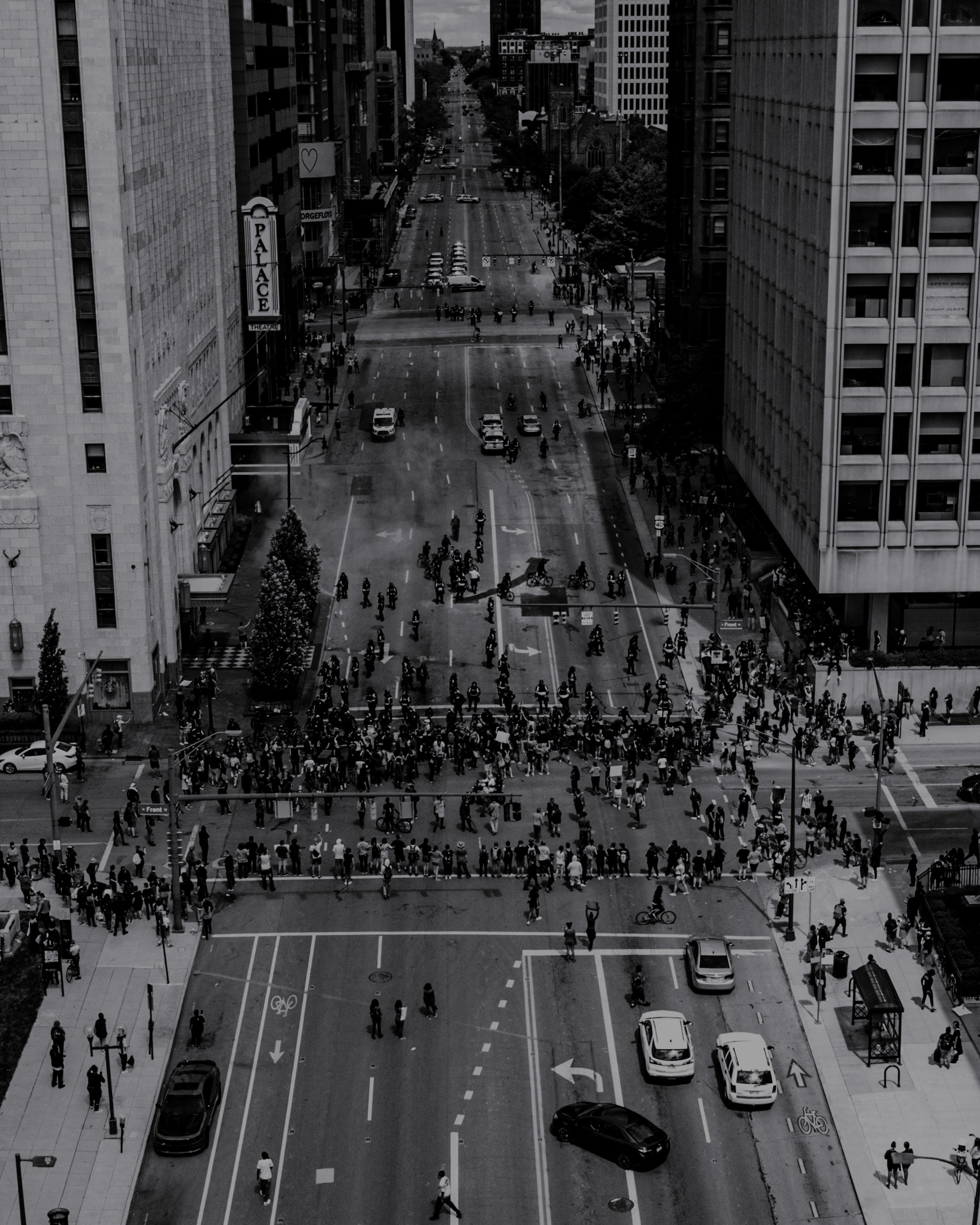As Australian photographer Jamie Wdziekonski (read our interview with Jamie here) recently put it, “There is no environmental justice without social justice.” And we couldn’t agree more. Environmental justice is the intersection of both social justice and environmentalism, where the inequity in environmental degradation is also considered. These two topics are without a doubt linked to one another and share common struggles. At Warm, these are our thoughts. That’s why we wanted to go back on the meaning of a word that, over the years, made its way from a legal theory to podcasts, directly to our Instagram feeds. 2020, through the lens of intersectionality.
But where does intersectionality come from?
The term intersectionality was first used by legal theorist of race and feminism Kimberle Crenshaw thirty years ago. In 1989, she wrote a legal paper entitled, “Demarginalizing the Intersection of Race and Sex: A Black Feminist Critique of Antidiscrimination Doctrine, Feminist Theory and Anti-Racist Politics.” The paper centered on three legal cases that dealt with issues of both racial discrimination and sex discrimination.
While Crenshaw’s term mostly focused on the intersection between race and gender, more recent uses of the term “intersectionality” have extended to include other individual characteristics like class, sexuality, ability and height, skin tone, neuro-diversity and many more. The term resonates within the present in the United States and worldwide. Today, it is synonymous of convergence of struggles and identifies connections between multiple sources of oppression. “Racial justice is a feminist issue,” said writer and activist Rachel Elizabeth Cargle following the protest march across the nation after George Floyd died in police custody. “Black women are seeing their children shot down in the streets. Black girls are being pushed out of systems due to institutionalized racism. Black mothers are dying at disproportionate rates due to the proven medical biases in maternal mortality. Black women are carrying the heavy burdens of being the foundations of communities that the police are terrorizing day in and day out.” It is also important to remind that, in America, black women got the right to vote in 1965 whereas in 1961, Yuri Gagarin was the first person to fly in space, before black women could even vote. Fact.
“Just like feminism should be intersectional, so should be environmentalism.”
Today, Crenshaw’s theory about intersectionality goes mainstream and also applies to ecofeminism, a branch of feminism that sees environmentalism, and the relationship between women and the natural world, as foundational to its profound analysis and practice. “Just like feminism should be intersectional, so should be environmentalism,” writes young activist Leah Thomas. “When striving to become better environmentalists, it’s also important to consider what communities are more likely to be exposed to the ramifications of climate change the fastest. It’s important to take into account which communities are already struggling to be protected equally by environmental laws so they can have equal access to a safe environment.”
Through the lens of the intersectional approach, intersectional environmentalism is an inclusive version of environmentalism that advocates for both the protection of people and the planet. “It identifies the way in which injustices are happening to marginalized communities and the earth are interconnected. It brings injustices done to the most vulnerable communities, and the earth, to the forefront and does not minimize or silence social inequality. Intersectional environmentalism advocates for justice for people and the planet” explains Leah Thomas. “Social justice cannot wait. It is not an optional ‘add-on’ to environmentalism. It is unfair to opt in and out of caring about racial injustices when many of us cannot. These injustices are happening to our parents, our children, our family and our friends. I’m calling on the environmentalist community to stand in solidarity with the Black Lives Matter movement and with Black, Indigenous + POC communities impacted daily by both social and environmental injustice. We must protect vulnerable communities alongside the environment.”
“What I find to be the most beautiful thing about Black culture and identity is that, like nature, our history is filled with rebirth and resilience.”
Part of the newly launched website Intersectional Environmentalist, Leah Thomas highlights that the Black community’s relationship to nature has been overshadowed and undermined. “What I find to be the most beautiful thing about Black culture and identity is that, like nature, our history is filled with rebirth and resilience. We find a way, time after time, to rise from the ashes and bloom where we are planted. While displacement, violence and injustice has at times distanced us from our cultural traditions, our ancestors have always had a unique relationship with nature. A key tenant to being an intersectional environmentalist is identifying the ways injustices done to people and the earth are interconnected,” she says. “The Black community in the U.S. has faced an inability to breathe through both police violence and disproportionate impacts of poor air quality. We must address this in order to change and also acknowledge and validate black traditions, experiences and practices in relationship to nature.”
Today, more than ever, there is no environmental justice without social justice. Today, more than ever, these two topics share common struggles. And, at Warm, that’s where our priorities lie.
